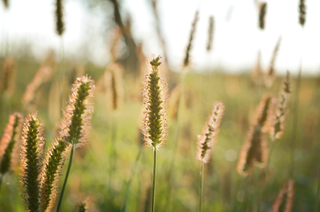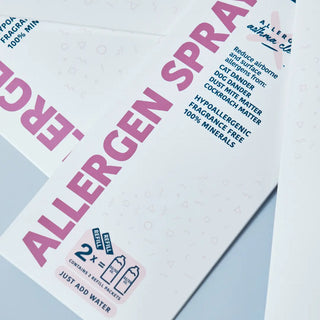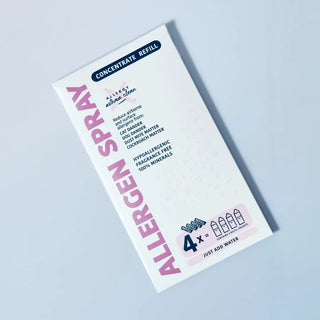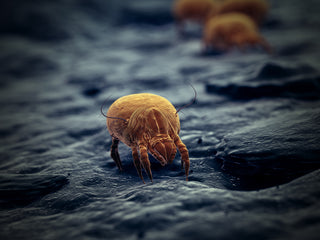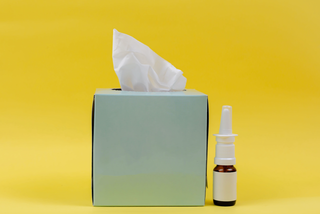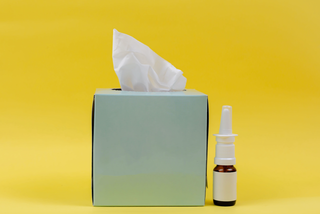Grass pollen allergies occur when your immune system mistakes tiny pollen grains (released during grass reproduction) as threats, producing IgE antibodies that trigger histamine release. Symptoms include sneezing, itchy watery eyes, runny/stuffy nose, coughing, and sore throat, often causing fatigue and disrupting daily activities. Management strategies include staying indoors during peak pollen times (early morning/late afternoon), keeping windows closed, using HEPA air purifiers, wearing sunglasses, showering after outdoor exposure, and monitoring pollen forecasts. Treatment options range from antihistamines and nasal corticosteroids to immunotherapy for long-term relief.
Key Takeaways:
- Immune system overreaction causes symptoms – IgE antibodies trigger histamine release when exposed to grass pollen, causing sneezing, itchy eyes, runny/stuffy nose, coughing, sore throat
- Common grass triggers – Bermuda grass, Timothy grass, Kentucky bluegrass, and ryegrass produce allergenic pollen during reproductive cycles
- Peak exposure times – pollen levels highest during early morning and late afternoon; stay indoors or wear masks during these periods
- Minimize indoor exposure – keep windows closed, use HEPA air purifiers (one per room, centered away from walls), shower and change clothes after outdoor activities
- Allergy testing options – skin prick tests (allergen extracts on skin) or blood tests (measures specific IgE antibodies) confirm grass pollen allergies
- Treatment ranges – OTC antihistamines for symptom relief, nasal corticosteroids for inflammation, immunotherapy (shots/sublingual tablets) for long-term desensitization; natural remedies include saline rinses, quercetin, butterbur
Are you constantly suffering from sneezing, itchy eyes, and a runny nose every spring? The culprit may be closer than you think and it could be all around you. It could be grass pollen. Let's demystify grass pollen, because that inevitable trigger of your allergy symptoms, is key to finding relief.
As the seasons change and grass begins to bloom (yes it does bloom), millions of tiny pollen grains are released into the air. These minuscule particles, invisible to the naked eye, are responsible for triggering allergies in many individuals.
Understanding the role of grass pollen in your allergies can help you take proactive steps to minimize your exposure and alleviate your symptoms. From identifying specific grasses that affect you most to implementing effective strategies to manage those allergies, this article will provide you with valuable insights and solutions.
Say goodbye to the frustration of constant sneezing and restless nights!
Understanding the causes of grass pollen allergies
Grass pollen allergies are a common type of seasonal allergy, affecting many people worldwide. But what exactly causes these allergies? Grass pollen is released by various grass species during their reproductive cycle. As the seasons change and grass begins to bloom, millions of tiny pollen grains are released into the air. These minuscule particles, invisible to the naked eye, are responsible for triggering allergies.
When someone with a grass pollen allergy comes into contact with these pollen grains, their immune system mistakenly identifies them as harmful invaders. In response, the immune system produces antibodies, such as immunoglobulin E (IgE), which trigger the release of histamine and other chemicals. This immune response leads to the classic symptoms of grass pollen allergies which we'll explore next.
Common symptoms of grass pollen allergies
Grass pollen allergies can cause a range of symptoms, which can vary in severity from person to person. Some common symptoms include:
- Sneezing: Sneezing is one of the most common symptoms of grass pollen allergies. It is the body's way of trying to expel the allergens from the nasal passages.
- Itchy eyes: Grass pollen can irritate the eyes, causing itching, redness, and watering.
- Runny or stuffy nose: Grass pollen can trigger an allergic reaction in the nasal passages, leading to a runny or stuffy nose.
- Coughing and sore throat: Some individuals may experience a dry cough or a sore throat as a result of grass pollen allergies.
- While fatigue is not a symptom of grass pollen allergies, it's a result of those allergies. If you have allergies you know they can be draining, both physically and mentally, leading to fatigue and decreased energy levels.
Living with grass pollen allergies can have a significant impact on just plain living. Allergy symptoms can interfere with work, school, and social activities, making it challenging to enjoy outdoor activities during the grass pollen season. The constant sneezing, itchy eyes, and congestion can also disrupt sleep, leading to fatigue and decreased productivity during the day.
In addition to the physical symptoms, grass pollen allergies can also take an emotional toll. Dealing with chronic allergies can be frustrating and can lead to feelings of irritability, anxiety, and even depression. It is important to address both the physical and emotional aspects of grass pollen allergies to improve overall well-being.
Although it may not be possible to completely eliminate exposure to grass pollen, there are several strategies you can implement to manage your allergies and reduce the severity of your symptoms. Here are some tips to help you breathe easy during the grass pollen season:
- Stay indoors during peak pollen times: Pollen levels tend to be highest during the early morning and late afternoon. If possible, try to stay indoors during these times to minimize your exposure or wear a mask when going out.
- Keep windows closed: Keeping windows closed in your home and car can help prevent pollen from entering and triggering your allergies.
- Use air purifiers: Consider using high-efficiency particulate air (HEPA) filters in your home to reduce pollen from the air. Remember, for air purifiers to be effective, you need to have one in each room of your home, away from the walls and located close to the center of the room.
- Wear sunglasses: Wearing sunglasses can help protect your eyes from coming into direct contact with grass pollen.
- Shower and change clothes after being outdoors: Taking a shower and changing into fresh clothes after spending time outdoors can help remove any pollen that may have attached to your skin or clothing. This is especially important before going to bed.
While it may not be possible to completely avoid grass pollen, there are steps you can take to minimize your exposure and reduce the severity of your allergy symptoms. Here are some additional strategies for avoiding grass pollen:
- Know your triggers: Identifying the specific grasses that affect you the most can help you take targeted measures to avoid them. Common grasses that produce pollen include Bermuda grass, Timothy grass, Kentucky bluegrass, and ryegrass.
- Stay informed about pollen forecasts: Monitoring pollen forecasts can help you plan your outdoor activities accordingly. Many weather websites and apps provide daily pollen counts for different areas.
- Create a pollen-free zone in your home: Designate a specific area in your home, such as your bedroom, as a pollen-free zone. Keep windows closed, use air purifiers, and regularly clean surfaces to minimize pollen accumulation.
- Consider landscaping alternatives: If you have severe grass pollen allergies, you may want to consider replacing grassy areas in your yard with low-allergen plants or hardscaping options.
If you suspect that you have grass pollen allergies, it is important to seek a proper diagnosis from a healthcare professional. Allergy testing can help identify the specific allergens that trigger your symptoms. There are two primary types of allergy tests:
- Skin prick test: In this test, small amounts of allergens, including grass pollen extracts, are placed on your skin, usually on your forearm or back. The skin is then pricked or scratched to allow the allergens to enter the skin. If you are allergic to grass pollen, you will develop a small raised bump at the test site.
- Blood test: A blood test, such as a specific IgE blood test, can measure the levels of specific antibodies in your blood. This test can help determine if you have an allergy to grass pollen.
Once a diagnosis is confirmed, your healthcare provider can work with you to develop an appropriate treatment plan.
There are several treatment options available for grass pollen allergies, depending on the severity of your symptoms. Remember all medication can come with some long or short term risk.
- Over-the-counter antihistamines: Antihistamines can help relieve symptoms such as sneezing, itching, and runny nose. They are available in various forms, including tablets, nasal sprays, and eye drops.
- Nasal corticosteroids: Nasal corticosteroid sprays can help reduce inflammation in the nasal passages and alleviate symptoms such as congestion and sneezing.
- Immunotherapy: Immunotherapy, also known as allergy shots, can be an effective long-term treatment option for grass pollen allergies. It involves receiving regular injections of gradually increasing amounts of grass pollen extract to desensitize your immune system.
- Sublingual immunotherapy: Sublingual immunotherapy involves placing drops or tablets containing grass pollen extract under your tongue. This treatment can be done at home and is a convenient alternative to allergy shots for some individuals.
In addition to conventional treatment options, there are several natural remedies that may help alleviate grass pollen allergy symptoms. While these remedies may not work for everyone, they are worth considering as part of your allergy management plan. Here are some natural remedies to explore:
- Nasal rinses: Nasal rinses using a saline solution can help flush out allergens from the nasal passages and provide temporary relief from congestion and irritation.
- Quercetin: Quercetin is a naturally occurring flavonoid found in certain foods, such as onions, apples, and berries. It has anti-inflammatory properties and may help reduce allergy symptoms.
- Butterbur: Butterbur is a herbal supplement that has been used for centuries to treat allergies. It may help relieve symptoms such as sneezing and nasal congestion.
Living with grass pollen allergies can be challenging, but with the right strategies and treatments, you can manage your symptoms and improve your quality of life. By understanding the causes of grass pollen allergies, recognizing the common symptoms, and implementing effective management techniques, you can minimize your exposure and find relief from the inevitable trigger of your allergy symptoms.
It is important to consult with a healthcare professional before starting or stopping any medications or supplements.




